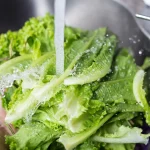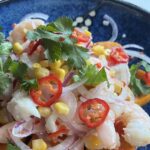It has happened to all of us at some point that we decide to cook fish on the grill but, when we turn it over, we find that it has stuck. Why? What could have happened if we have followed the recipe correctly?
In we will review the main mistakes made when cooking grilled fish and we will share our tricks to prevent it from sticking. One of the most important is the proper choice of griddle or pan, since not all are made with the same materials or for the same uses. For this reason, we also teach you what you should look for to select the correct one. Read on and discover with us why fish sticks to the pan, griddle or grill and what to do.
Have you chosen the right pan or griddle?
One of the biggest mistakes when grilling fish is using the wrong pan. To avoid sticking, the ideal is to buy a non- stick griddle or frying pan, easy to clean and made to roast all kinds of food. In this sense, Jada products stand out, especially the range of GR3000 grill plates. since they have extreme hardness and resistance, they are prepared to cook meat and fish without sticking thanks to their PFOA-free Pluton Granite Black non-stick coating. Another advantage of this type of plate is that food can be cut on it without altering the quality of the surface. And since they are capable of maintaining the temperature once disconnected, it allows us to save while we cook.
When using pans made for other uses, what happens is that the cooked food sticks to the surface, dries out and spoils, resulting in a dish that does not meet our expectations. To cook fish on the grill, it is always recommended to opt, precisely, for kitchen plates instead of all-purpose pans.
How to choose a kitchen griddle?
As we have just pointed out, when choosing a griddle to cook fish, meat or vegetables without sticking, it is important to bear in mind that it meets the following requirements:
- Non-stick Material.
- Minimum power of 1600 W, depending on the size of the surface.
- It must be able to reach a constant temperature.
Do you have the right utensils for a griddle or frying pan?
It is possible that in its day the pan or griddle you bought was non-stick, but with the passage of time and misuse it is common for the surface to be damaged and cause the fish to stick when cooked. This happens especially when cooking using metal cutlery, such as a fork to turn fish or meat, which ends up scratching the surface of the griddle or frying pan.
Instead, it is recommended to use spatulas, pallets, tongs or spoons made of wood, silicone or heat-resistant plastic, which are of quality and do not damage the surface of the pan or griddle or alter the flavor of the food.
How to clean a kitchen griddle correctly?
On the other hand, incorrect cleaning can also cause damage to the material and cause food to stick when using the pan or griddle. Many people rub intensely to remove embedded food without thinking that this may be damaging the surface to be cleaned. In these cases, it is advisable to remove the dirt with damp kitchen paper when the griddle or frying pan is still a little hot. The ideal temperature is the one that allows us to easily remove these remains without burning ourselves. Once cold, this step becomes complicated and can lead us to make mistakes.
When we have already eliminated those remains of food, we can go on to clean the kitchen griddle under the tap with a soft sponge. If we use scouring pads we run the risk of damaging and scratching the material, especially if we exert some pressure when scrubbing.
The iron or frying pan, very hot!
If none of the above helps you to know why fish sticks to the grill or in the pan, perhaps the answer lies in the temperature. When the fish is cooked without the griddle being hot enough, the result is precisely this: it sticks! To avoid this, it is important to add just the right amount of oil, let it heat up well and then place the fish skin side down.
When turning the fish it is important to keep in mind that we must not force it, because then it will stick despite having followed all the previous recommendations. What exactly does this mean? Which should come off the surface by itself? If we have difficulty doing this but we consider that it is already done, then we will remove the griddle or frying pan from the heat and wait for it to detach; at that time we will turn it over. Again, we will place the plate on the fire so that it cooks on the other side and we will remove it when we see that it detaches without problems.
How to grill fish without sticking?
After reviewing the most common mistakes that cause fish to stick in the pan or on the griddle, we are going to summarize the tricks to prevent it from happening. Thus, we explain what to do so that the fish does not stick to the grill, griddle or frying pan:
- Grilled fish skin-side up or skin-side down? The first time we place it on the griddle or pan, always skin side down!
- As we have already said, the griddle must be very hot and, unless it has a non-stick coating that allows cooking without oil, a little fat must be added to cook the fish without sticking.
- If it does not detach from the surface, we will remove the pan from the heat so that it detaches itself.
- Covering the griddle or frying pan with parchment or parchment paper is another very effective trick to prevent the fish from sticking if the pan is not non-stick. Of course, we must also grease it with the right amount of oil and wait until it is very hot.
Types of fish to grill
The truth is that we can cook all kinds of grilled fish, so there are no good or bad fish. By using this cooking method, we can considerably reduce the total calorie intake, since the amount of oil used is minimal, and the properties of the fish are much better maintained than with others. In this way, we can take the liberty of cooking both grilled white fish and oily fish, since they also provide multiple benefits for the body.
When deciding what type of fish to grill, we should take into account, rather, if we are following a special diet, as well as our nutritional needs. For example, if we want to lose weight, it is convenient to opt for less fatty fish, such as hake, sea bream, sole or sea bass, among others.



